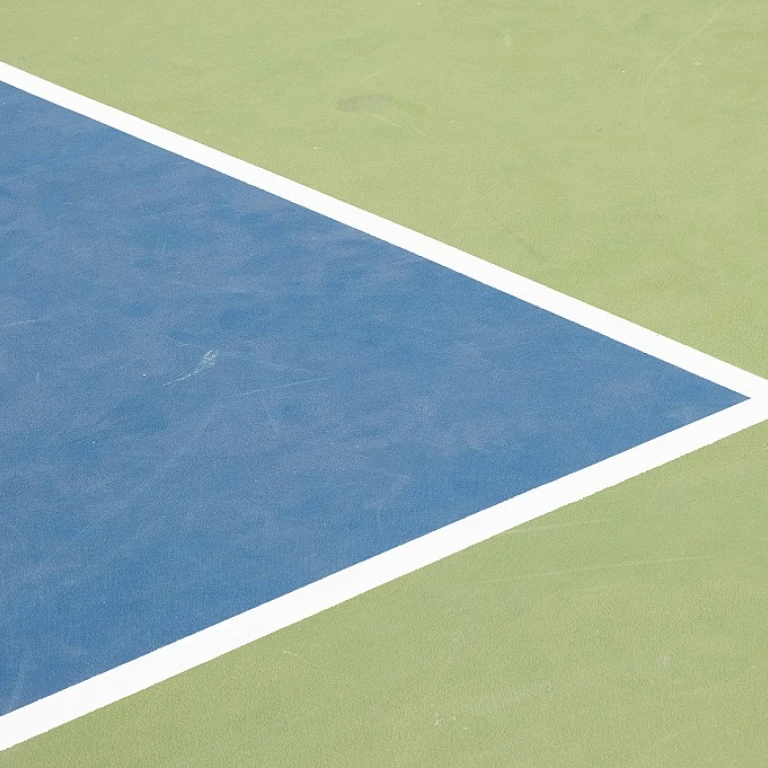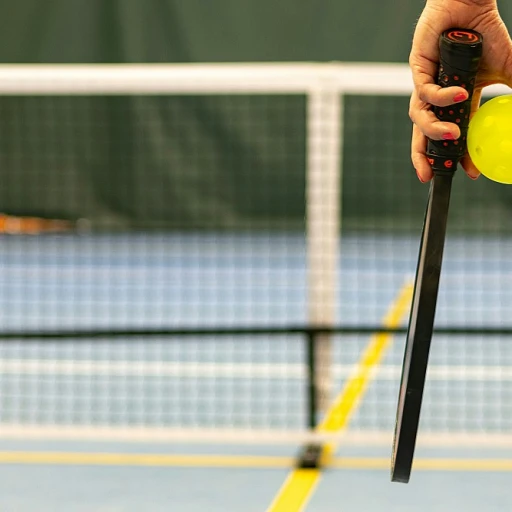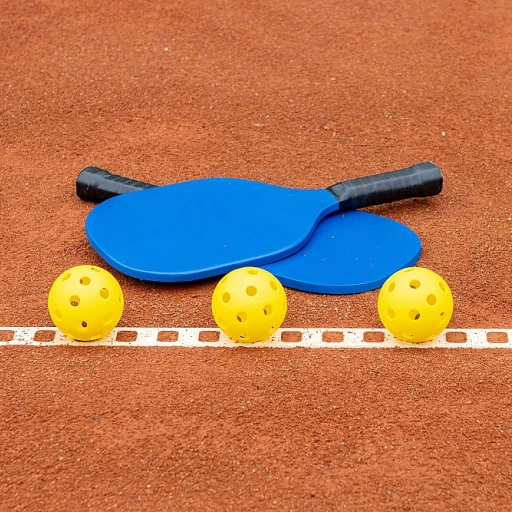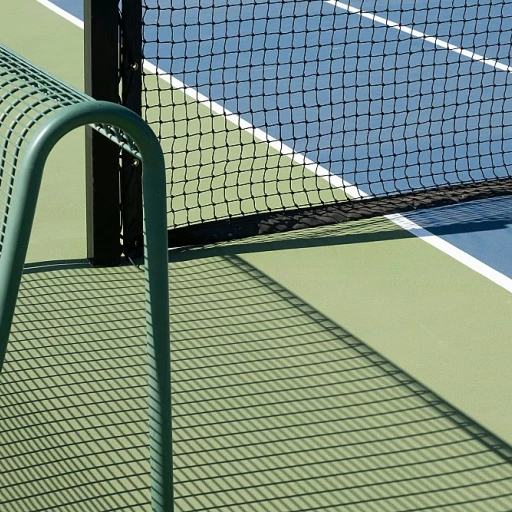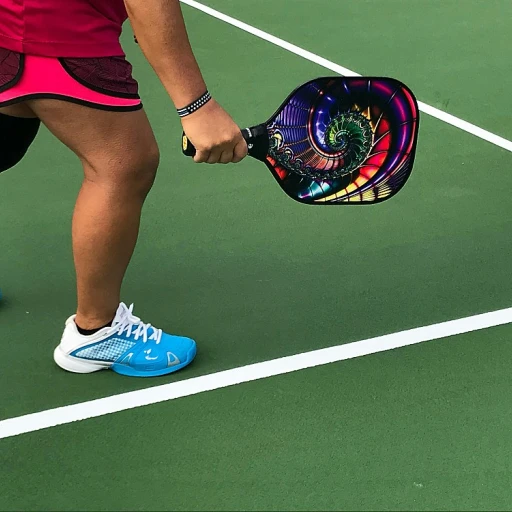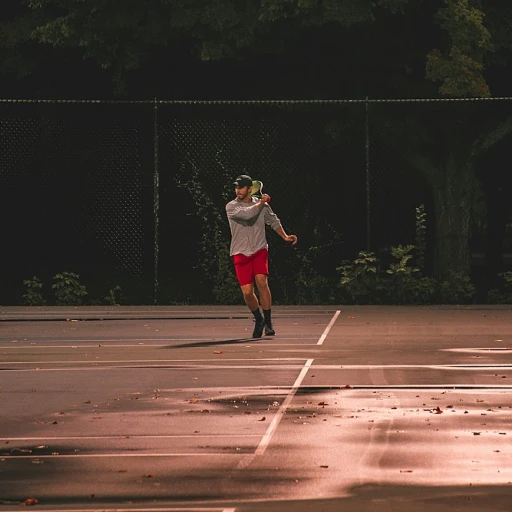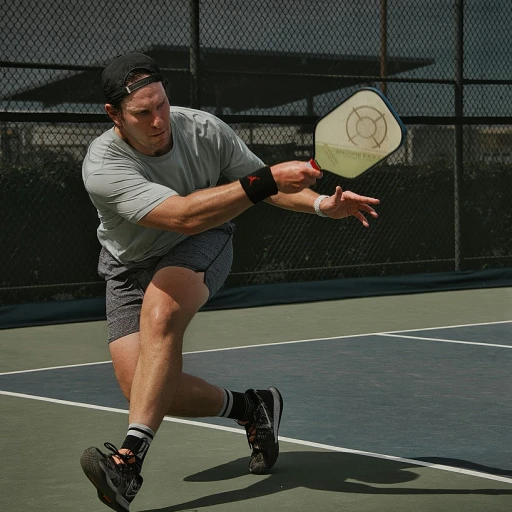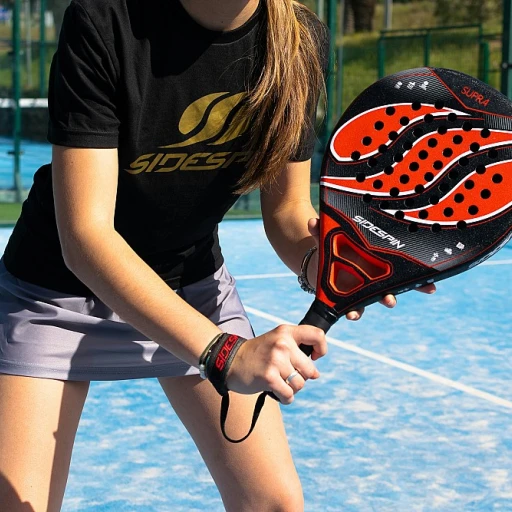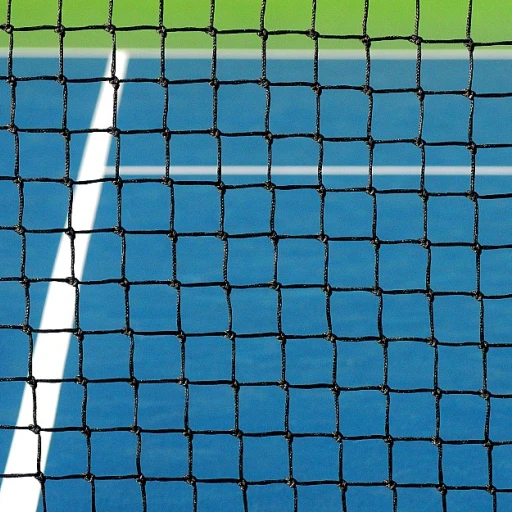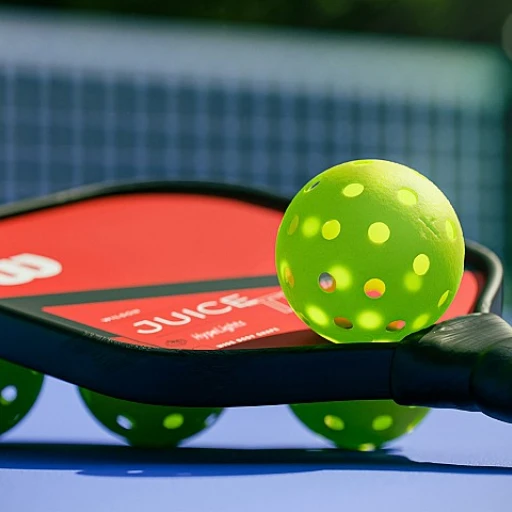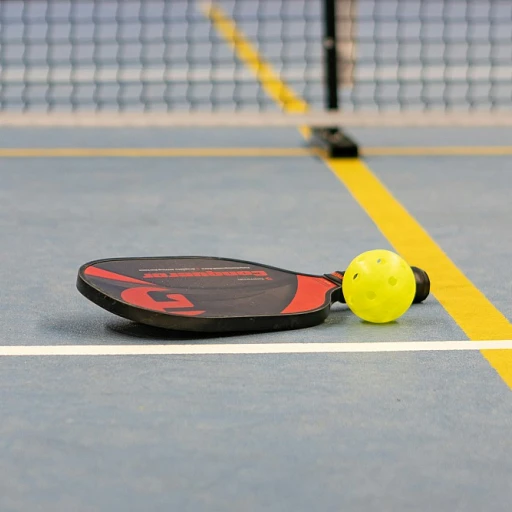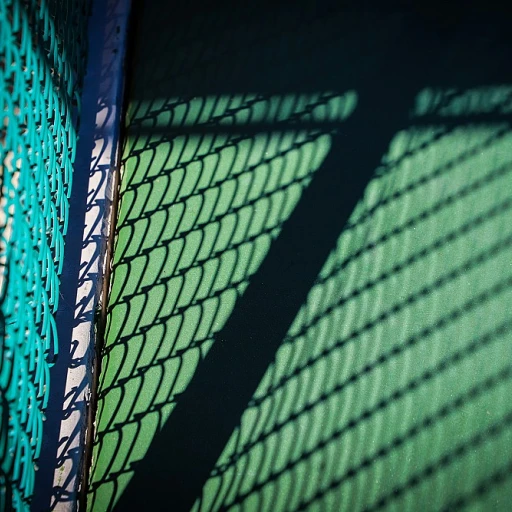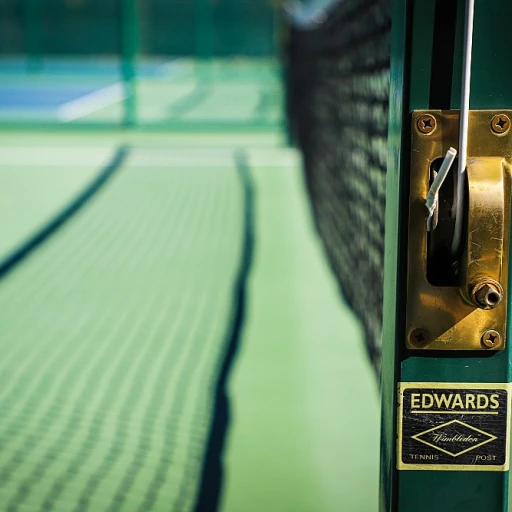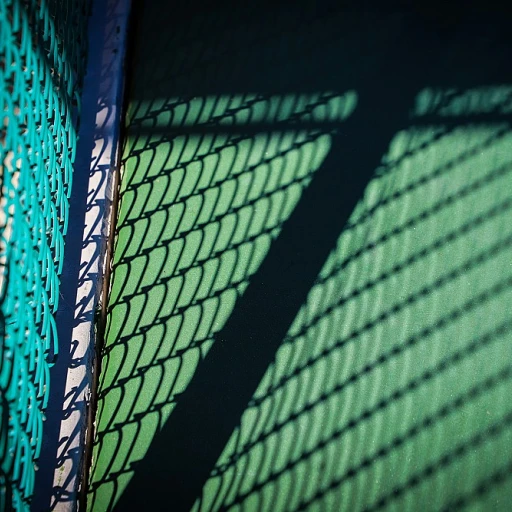
Understanding the Basics of Pickleball and Tennis Nets
Exploring Net Heights in Pickleball and Tennis
Understanding the differences in net height between pickleball and tennis can significantly enhance your play strategy and performance. In pickleball, the net is set at a height of 36 inches at the posts and 34 inches at the center. This design allows for a unique playing experience where both power and finesse can be effectively employed. In contrast, tennis nets have a different configuration, standing at 42 inches at the posts and 36 inches at the center. This offers a higher barrier, encouraging a more strategic play, especially when volleying or performing powerful serves. These variances in net setup have a profound impact on how the games are played. For example, the slightly lower height in the center of a pickleball net facilitates a more aggressive and precise groundstroke, while the higher posts in tennis demand robust topspin and well-calculated shots to clear the net efficiently. To gain a practical perspective and see these differences in action, take a look at a tennis court in action at the Sunnyvale Tennis Center's Court Cam. This resource provides a real-time view of how players adapt their techniques according to net height dynamics.Impact of Net Height on Game Dynamics
Game Dynamics: The Effect of Net Heights
Understanding how net height impacts the dynamics of both pickleball and tennis is crucial for any player aspiring to master these sports. One can easily observe that the net height is a defining factor in how the ball is played across the court, influencing strategy, pace, and agility. In pickleball, the net height is typically 36 inches at the posts and 34 inches at the center. This lower net height than tennis, where the standard height is 42 inches at the posts and 36 inches in the middle, considerably affects how the game unfolds. Since the ball can pass over the pickleball net with fewer obstacles, players must focus on precision and control. The lower net encourages a fast-paced exchange, compelling players to develop skills that enhance their speed and reaction times. Conversely, in tennis, the higher net height demands powerful shots to clear the net effectively. Tennis players need to utilize more muscle strength and technique, particularly when targeting angles and depth. This makes the game relatively slower paced compared to pickleball but increases the emphasis on endurance and strategic play. The differences in net height between these two sports also influence the trajectories the ball can take. With a pickleball net positioned lower, the ball travels closer to the court surface, making volleys and quick returns integral to successful play. Tennis nets' greater height sees the ball arc higher, allowing for dramatic lobs and drops that rely on swift positioning. Ultimately, understanding these differences in net height facilitates players in adjusting their techniques and approaching each game with an optimal strategy tailored to the sport's unique physical demands.Adjusting Techniques for Different Net Heights
Techniques to Adapt to Various Net Heights
Playing pickleball and tennis requires adapting to different net heights, which can greatly influence game dynamics. Pickleball nets stand lower than tennis nets, at 34 inches at the center. This lower height necessitates a different technique and strategy than tennis, where the net is 36 inches at the posts and slightly lower at the center.
Pickleball players should focus on maintaining their paddle angle and power to adjust to the lower net during game play. The trajectory of the ball and strength applied needs to account for pickleball's unique height requirements. A great drill to master is to practice soft dinks and control shots that barely cross the net, honing the precision necessary for successful play.
On a tennis court, the higher net requires techniques that emphasize power and spin. Players often need stronger serves and overhead shots to clear the net. Therefore, tennis players should focus on building strength and mastering topspin to ensure the ball doesn’t succumb to the higher center net height.
Switching between sports, players often find differences in the net heights affecting their technique. Experienced players should create practice routines that incorporate both sports, transitioning between pickleball courts and tennis courts to develop agile and adjustable skillsets. This approach will not only help master each sport individually but also understand the nuanced impacts of net differences on both pickleball play and tennis. Learning various techniques at different net heights can be explored further with personalized setups, for instance, a mini pickleball court offers great flexibility for practice.
Consciously adjusting techniques based on the height differences can significantly enhance a player’s prowess in both pickleball and tennis, making transitioning between these two popular sports more seamless and enjoyable.
Equipment Considerations: Nets and Court Setup
Essential Equipment Considerations for Net and Court Setup
When it comes to setting up a game, both pickleball and tennis require specific equipment considerations to ensure a smooth and fair play on the courts. The type of net used and the accuracy of its installation can significantly affect the dynamics of play pickleball and tennis.- Pickleball Net vs Tennis Net: The nets for these sports are distinctly different, not just in net height, but also in width and construction. A standard pickleball net stands at a height of 34 inches in the center and 36 inches at the posts, while a tennis net is set higher, usually measuring 36 inches at the center and even taller, at 42 inches, at the posts.
- Court Differences and Sizes: A pickleball court is considerably smaller than a tennis court, being 20 feet wide by 44 feet long, whereas a tennis court extends to a larger size. These differences inherently adjust the way the ball is played across the net, demanding precision and strategy from players.
- Setting Up the Net: Properly installing and maintaining accurate heights for these nets play a critical role. Pickleball nets must be set so that they are uniformly tight and centered. This ensures that the ball trajectory remains consistent. Similarly, maintaining the correct height and tension of tennis nets is crucial for fair play.
- Material and Durability Considerations: The materials used for nets are another consideration for both sports. Nets need to be durable to withstand continuous play and environmental conditions. Choosing a net that can stay taut and resist wear is key for long-term use.
Training and Drills for Mastering Net Play
Enhancing Skills with Specific Training Drills
Mastering net play, whether on a pickleball court or a tennis court, involves focused training that can accommodate the different net heights and dynamics. Given the nuances of net height in pickleball and tennis, implementing varied drills can significantly improve a player's ability to adapt and excel in both sports.Focused Drills for Net Play
Incorporating specific drills that target adjusting to the height and tension of pickleball nets and tennis nets can be beneficial for players. Here are some recommended drills:- Dinking Drills: Practice dinking over a pickleball net, which typically stands at 36 inches high at the posts and 34 inches at the center. Emphasize control and precision to ensure the ball lands softly on the opponent's side, reducing their attacking opportunities.
- Volleys and Overheads: Conduct volley drills on both tennis and pickleball nets. Vary the height by practicing on tennis nets, which are 42 inches high at the posts, compared to pickleball nets, to refine agility and reaction times.
- Cross-Court Net Drills: Set up a practice net slightly higher than a standard pickleball net to simulate different game scenarios. Alternate between high and low shots to increase adaptability and footwork.
Utilizing Court Equipment Effectively
Players should ensure that the training environment reflects the real-world conditions they'll experience. Setting up nets and posts accurately can make a significant difference in practice outcomes. On a tennis court, ensure the net is taut and at the standard 36 inches high in the middle. On a pickleball court, ensure the proper net height is maintained for effective training. In conclusion, developing a keen sense of net flow between pickleball and tennis requires tailored drills. By understanding the differences in court dimensions and making small adjustments in training, players can enhance their performance dramatically. These strategies not only help in dealing with the varied net heights but also cover the intricate aspects of each game, preparing players to face diverse opponents with confidence.Professional Insights: Interviews with Players and Coaches
Insights from the Pros: Elevating Your Net Play
Player and coach perspectives provide invaluable insights into mastering the nuances of net height in both pickleball and tennis. The differences in net height not only impact physical dynamics but also demand strategic adjustments. Here's what the experts say:- Adapting to Net Heights: Experienced players often emphasize the importance of adjusting one's stance and swing to accommodate the variations in net height. In pickleball, for example, where the net stands 34 inches at the center and 36 inches at the posts, players need to focus on low-impact shots and quick reflexes. Comparatively, tennis requires handling a net height of 36 inches in the middle, challenging players to aim higher over the net without losing accuracy.
- Technique and Tactics: Coaches often train players on techniques that exploit net differences. In pickleball, getting the ball just over the net can result in a high arc, minimizing the opponent's play options. Conversely, in tennis, the focus is often on power and depth, utilizing the higher net to one’s advantage.
- Court Awareness: Knowing the dimensions you are playing in is crucial. Pickleball courts, being 20 feet wide, offer a compact play area requiring precision, while tennis courts, significantly larger, demand strength and endurance. Players often practice specific drills to excel in each environment.
- Skill Development: Drills like practice in alternating courts, help players fine-tune their game. According to interviews, professionals often engage in workouts that cater to both net pickleball and net tennis, prepping them for varied scenarios.

